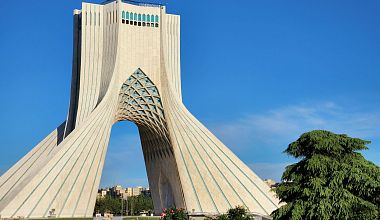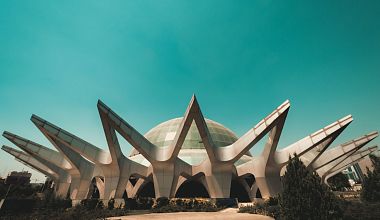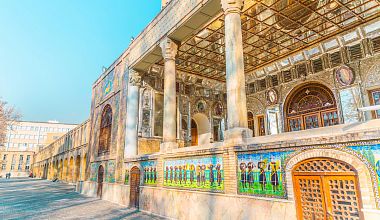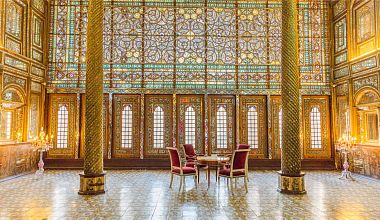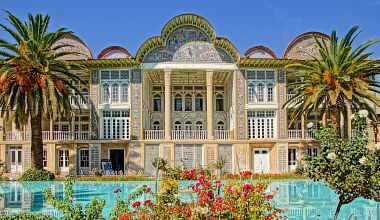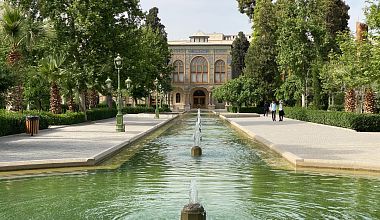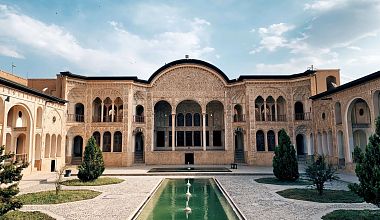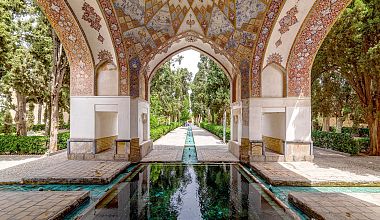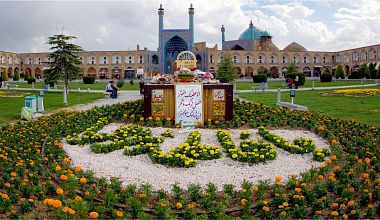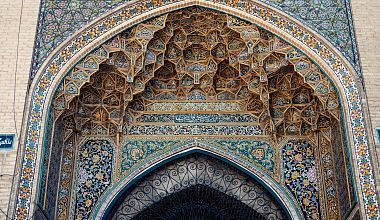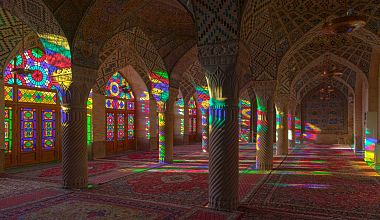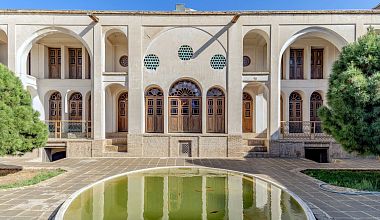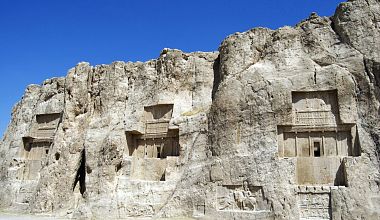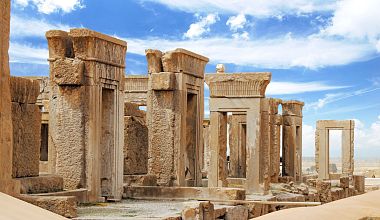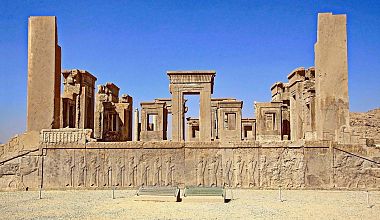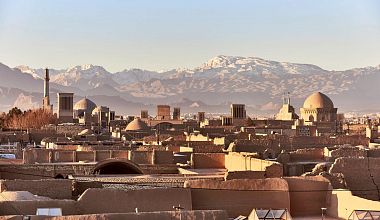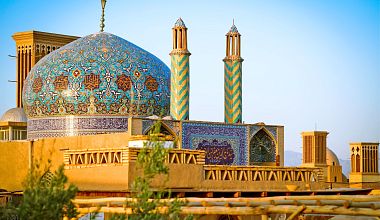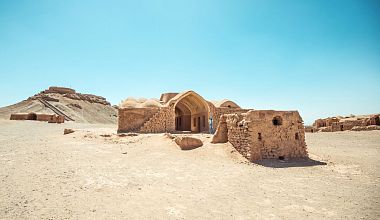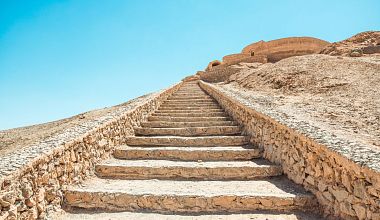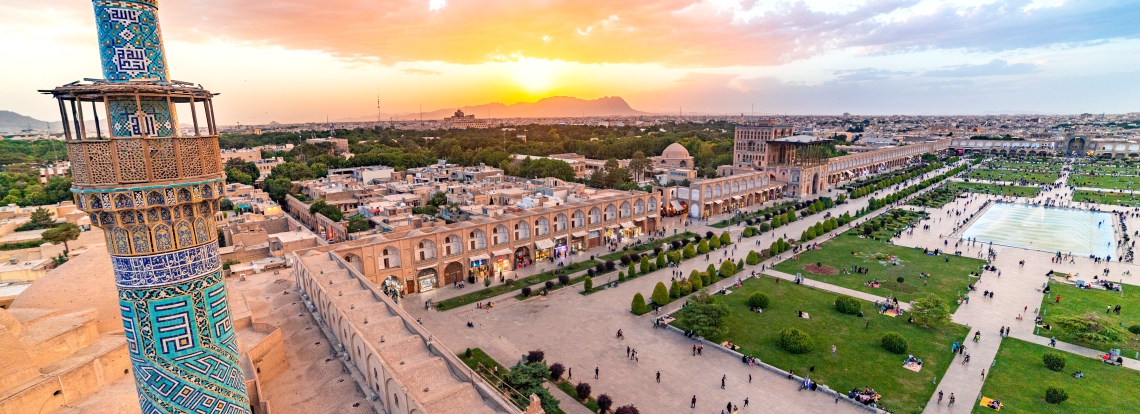
Reasons to go on a group tour to Iran
- to visit 5 UNESCO World Heritage sites;
- to see how empires and civilizations rose and fell;
- to see how the art of the conquered peoples, transformed, created a new original appearance of the conquerors;
- to find out how and why events of the past still appear in the current news of the international media;
- to find out what's the life is in one of the most mysterious countries in the world.
On the group tour to Iran we will
- visit the royal palace complexes of the Persian Monarchs of the Achaemenid dynasty (705-330 BC), Safavid dynasty (1501-1736 AD), Zand dynasty (1753-1794 AD) and Qajar dynasty (1795-1925 AD);
- walk the path of kings and conquerors through the ruins of the once great Persepolis, as destroyed by Alexander the Great;
- discuss how the doctrine of Zoroastrianism about good thoughts, words, and deeds, shaped the principles of governance in the multicultural Achaemenid Empire;
- compare the scale and architecture of the tombs of Cyrus the Great, Hafiz and Imam Khomeini
- find out which elements of European architecture, adopted during the reign of the Qajar dynasty, harmoniously fit into the interiors of mosques and houses of the Iranian nobility;
Arrival in Tehran, the sightseeing tour, departure for Shiraz.
Your guide will meet you at the airport, and our journey through Iran will begin with a visit to the Holy shrine of Imam Khomeini. This impressive complex, notable for its vast scale, is the first landmark that you see on the way from Imam Khomeini International Airport to Tehran. The tomb of the father of the Islamic Revolution serves as a starting point for understanding modern Iranian history and the revolution's impact on three generations of Iranians.
The Golestan Palace complex will send us to Persia of 18th-19th centuries, during the Qajar dynasty. Traditional elements of Eastern architecture — such as wind towers and iwans adorned with bright, hand-painted ceramic tiles featuring traditional patterns — are unexpectedly intertwined with European scenes and motifs, reflecting the Qajar rulers' fascination with European trends.
In the evening, we will departure for Shiraz.
Photoshoot at Nasir al-Mulk, visit to historical landmarks of Shiraz
Nestled in the heart of Iran, in Fars Province lies Shiraz, a city renowned for its blooming gardens, poetry, and wine. The great Persian poets Hafez and Saadi glorified its beauty in their verses. Their shrines have become cultural treasures of Shiraz, attracting pilgrims from around the world seeking to connect with ancient sanctuaries and uncover the mysteries of the Persian soul.
As the locals say, it is impossible not to become a poet in Shiraz..
At dawn, you will head on a photoshoot at Nasir al-Mulk. It is better to visit this mosque early in the morning, when the first rays of sunlight pierce through its colourful stained-glass windows, filling the hall with a spectrum of vibrant hues and patterns.
After a breakfast break, your tour of Shiraz will continue. You will explore Persian poetry, visit the city’s landmarks, and learn about Sufism and its followers..
Departure for Yazd, with visits to Persepolis and Naqsh-e Rustam
After breakfast, you will set off for Yazd. Along the way, you will visit Persepolis, the ancient capital of the Persian Empire, and the tombs at Naqsh-e Rustam. The vast Achaemenid Empire, laying from the eastern Mediterranean and Egypt to the Indus River in India, is considered to be the first empire to embrace cultural diversity of its peoples. This regard is reflected in Achaemenid architecture, which embodies a synthesis of the various cultures within the empire.
Upon arrival in Yazd, you will take a walk through its historic centre. Older than the Egyptian pyramids and a contemporary of biblical Babylon, Yazd is one of the world’s oldest cities, preserving its traditional architecture to this day. Its historic centre is a UNESCO World Heritage Site.
Tour of Yazd and departure for Isfahan
After breakfast, you will explore one of the world’s oldest religions, Zoroastrianism, by visiting the Fire Temple. You will also see the burial towers known as the Towers of Silence before departing for the city of Isfahan.
On the way to the cultural capital of Iran, you will stop in the town of Meybod. Here, you will visit the Narin Castle, explore ancient water mills and historic mosques, and learn how the Persians managed to address water scarcity in the desert, even in pre-Islamic times.
City tour and souvenir shopping
Your acquaintance with Isfahan begins with a visit to its main attraction, Naqsh-e Jahan Square.
Constructed in the early 17th century, the square forms a cohesive architectural ensemble, including the Shah Mosque, Sheikh Lotfollah Mosque, Ali Qapu Palace, and the Grand Bazaar. All these monuments surrounding the square are UNESCO World Heritage Sites. The Shah Mosque of the 17th century, renamed the Imam Mosque after the Islamic Revolution, is particularly noteworthy.
The mosque features a double-layered dome adorned with glazed tiles in turquoise, light blue, and deep blue hues. At its entrance stand two towering minarets, each nearly 42 metres high.
Departure for Kashan via Abyaneh
In the morning, after visiting Vank Cathedral and the Jameh Mosque, you will head to the village of Abyaneh. This village is renowned for its unique architecture, with houses built from red clay, as well as for its culture and customs, which differ from those of central Iran.
Among all the residential houses, you will find the ruins of a medieval fortress, a fire temple, mosques, pilgrimage sites, and three citadels. The villagers maintain a traditional style of clothing and continue to practise the ancient religion of Zoroastrianism. Women wear traditional costumes, and the community produces handmade crafts, preserving the local weaving traditions.
After exploring Abyaneh, your journey will continue to Kashan.
Since ancient times, Kashan has been located at the crossroads of trade routes. Weary caravans arriving in the city would first head to Persian baths — not just places for rest, but also social hubs where business deals were discussed and negotiations were held. One of such bathhoused is the historic Hammam-e Amir Ahmad, adorned with mosaics and frescoes worthy of a royal palace. This is where you will begin your exploration of Kashan the following day.
Sightseeing tour of Kashan and transfer to Tehran
After visiting the Sultan Amir Ahmad Hammam, you will head to a nearby 19th-century mansion once owned by a wealthy carpet merchant. Your guide will explain the lifestyle of wealthy merchants in 18th- and 19th-century Iran, highlighting architectural features designed to suit Kashan’s desert climate and offering insights into the city’s history and local customs.
At the historic bazaar of Kashan, you will enjoy Iranian tea with traditional sweets while listening to stories from locals, gaining a deeper understanding of Iranian culture and traditions from the 18th to the 20th centuries.
After the tour of Kashan, you will travel to Tehran and check into a hotel near the airport to have a rest before your flight.
Going home.
- Tehran
- Kashan
- Isfahan
- Yazd
- Shiraz
- Golestan Palace
- Mausoleum of Ruhollah Khomeini
- Azadi Tower
- Fin Garden
- Tabatabai House
- Sultan Amir Ahmad Bathhouse
- Bazaar of Kashan
- Naqsh-e Jahan Square
- Sheikh Lotfollah Mosque
- Si-o-Se Pol Bridge
- Khaju Bridge
- Vank Cathedral
- Yazd Tower of Silence
- Persepolis (Takht-e Jamshid)
- Pasargadae
- Nasir al-Mulk Mosque
- Naqsh-e Rostam
- English speaking guide
- Entry tickets
- Transfer
- Accommodation in a 4-5 star hotel with breakfast
- Travel insurance
- Iranian visa
- International flights
- Lunches and dinners

